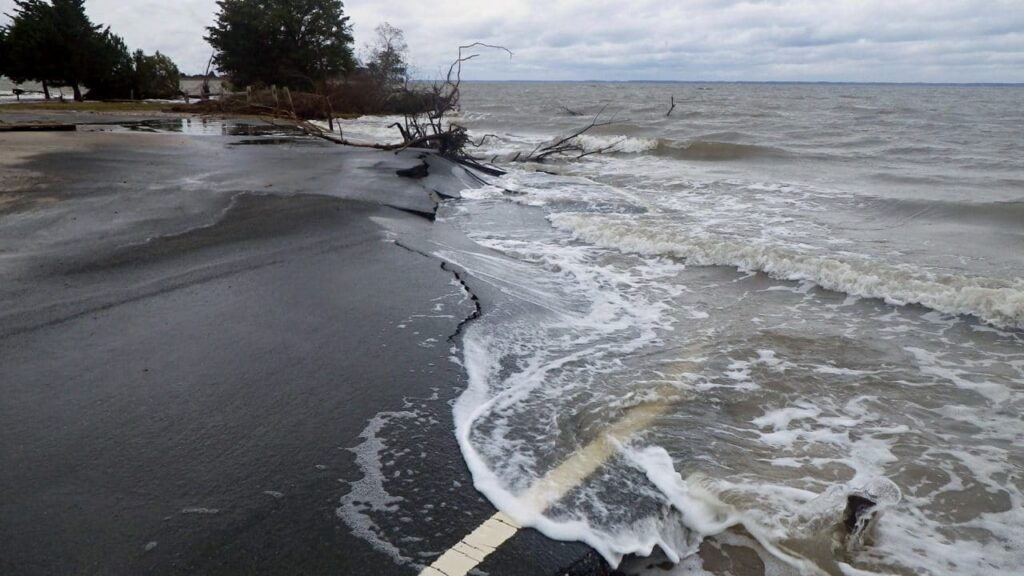Sea Level Rise: A Looming Threat with Global Consequences

Since 1880, global mean sea level has increased by approximately 8–9 inches (21–24 centimeters). This rise primarily stems from the combined effects of meltwater from glaciers and ice sheets, along with the expansion of seawater due to rising temperatures. By 2022, the global mean sea level had surpassed 1993 levels by 101.2 millimeters (4 inches), marking the highest annual average recorded since satellite monitoring began in 1993.
From 2006 to 2015, the global mean water level surged by 0.14 inches (3.6 millimeters) per year, surpassing the twentieth-century average rate of 0.06 inches (1.4 millimeters) per year. Projections suggest that by the end of the century, even under relatively low greenhouse gas emission scenarios, the global mean sea level could rise by at least one foot (0.3 meters) above 2000 levels.
Regional variations in sea level rise exist due to natural fluctuations in wind strength and ocean currents. Factors such as ground settling, upstream flood control, erosion, and the rebounding of land from Ice Age glaciation further contribute to local differences in sea level trends. Notably, the fastest rates of sea level rise in the United States are observed in the Gulf of Mexico, particularly from the mouth of the Mississippi River westward, followed by the mid-Atlantic region. Conversely, sea levels are decreasing in Alaska and some areas of the Pacific Northwest, although this trend may reverse under high greenhouse gas emission scenarios.

Significance of Sea Level Rise
Approximately 30% of the U.S. population resides in densely populated coastal areas, where sea level rise poses significant risks such as flooding, shoreline erosion, and heightened vulnerability to storms. Globally, eight of the ten largest cities are located near coastlines, amplifying the socio-economic impact of rising seas.
Infrastructure vital for local economies, including roads, bridges, subways, and power plants, is at risk from sea level rise. Moreover, higher sea levels extend the reach of destructive storm surges inland, exacerbating the impact of extreme weather events. Additionally, more frequent occurrences of high-tide flooding disrupt daily life and incur substantial costs for affected communities.
The ecological consequences of rising seas are profound, affecting coastal ecosystems that provide crucial services such as storm protection and habitat for marine life. Saltwater intrusion into freshwater aquifers further threatens water supplies for both human consumption and agriculture.

Drivers of Sea Level Rise
Global warming is the primary driver of sea level rise, primarily through the melting of glaciers and ice sheets, as well as the thermal expansion of seawater. Human activities, including groundwater depletion, also contribute to the transfer of liquid water from land to the ocean.
Recent decades have witnessed an acceleration in ice loss from glaciers and ice sheets, particularly in Greenland and Antarctica. Consequently, the contribution of melting ice to sea level rise has surpassed thermal expansion in recent years.

Methods of Measurement
Sea level is monitored using tide gauges and satellite altimeters. Tide gauges record daily tidal variations, while satellite altimeters measure sea surface height. Additionally, sea surface temperatures are monitored to assess thermal expansion, and changes in Earth’s gravity field help estimate mass transfer from land to ocean.

Future Projections
Continued global warming will inevitably lead to further sea level rise, contingent upon future greenhouse gas emissions. Uncertainties remain regarding the behavior of major ice sheets, which could undergo rapid collapse, further exacerbating sea level rise.
Projections suggest that by 2100, global mean sea level could rise by at least 0.3 meters (1 foot) above 2000 levels, even under scenarios with minimal greenhouse gas emissions. However, under high-emission scenarios, sea level rise could exceed 2 meters (6.6 feet) by the end of the century.
In the United States, local sea level rise is expected to exceed the global average, with some regions facing increases of up to 16–18 inches higher than 2020 levels by 2050. Projections for the end of the century vary widely depending on greenhouse gas pathways, with potential increases ranging from 0.6 meters (2 feet) to 2.2 meters (7.2 feet) on average, and up to 3.9 meters (13 feet) by 2150 under extreme scenarios.




